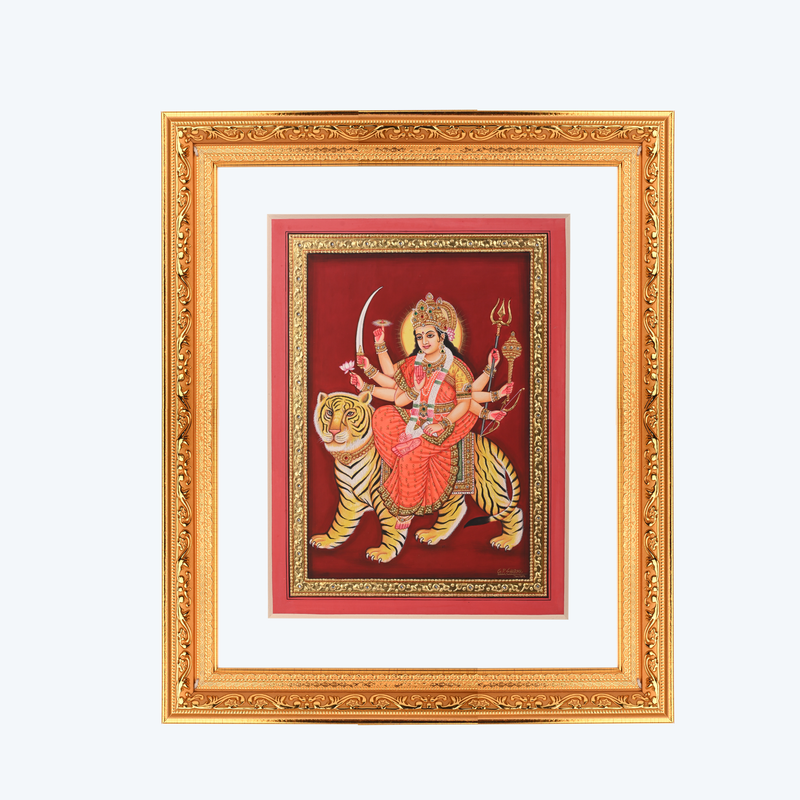
Description
Description
Tanjore Painting, Also Known As Thanjavur Painting, Is A Classical South Indian Art Form Originating From Thanjavur In Tamil Nadu, Characterized By Vibrant Colors, Intricate Designs, And The Use Of Gold Foil, Gems, And Glass Beads.
Here's A More Detailed Look:
Key Characteristics:
- Origin: Thanjavur, Tamil Nadu and India.
- Style: Classical South Indian Painting Style.
- Materials: Wooden Planks (Also Called "Palagai Padam").
- Vibrant Colors: Gold Foil (Often 22 Karat) Inlay Of Glass Beads And Precious Gems. Embossing (Creating Raised Areas).
- Themes: Hindu Gods And Goddesses, Saints, And Scenes From Hindu Puranas. Krishna And Rama Are Popular Subjects.
- Technique: A Sketch Is Drawn On Cloth, Which Is Then Pasted Onto A Wooden Base. The Surface Is Coated With A Mixture Of Chalk Powder Or Zinc Oxide With A Water-Soluble Adhesive. The Painting Is Then Decorated With Gold Leaf, Gems, And Glass Pieces.
- Significance: Tanjore Paintings Are Often Found In Temples And Homes, Serving As Devotional Icons. They Are A Symbol Of South Indian Art And Culture. The Art Form Has Influenced South Indian Temple Art And Architecture.
- Geographical Indication: Recognized As A Geographical Indication By The Government Of India In 2007-08.
- Local Name: Palagai Padam (Meaning "Picture On A Wooden Plank").

